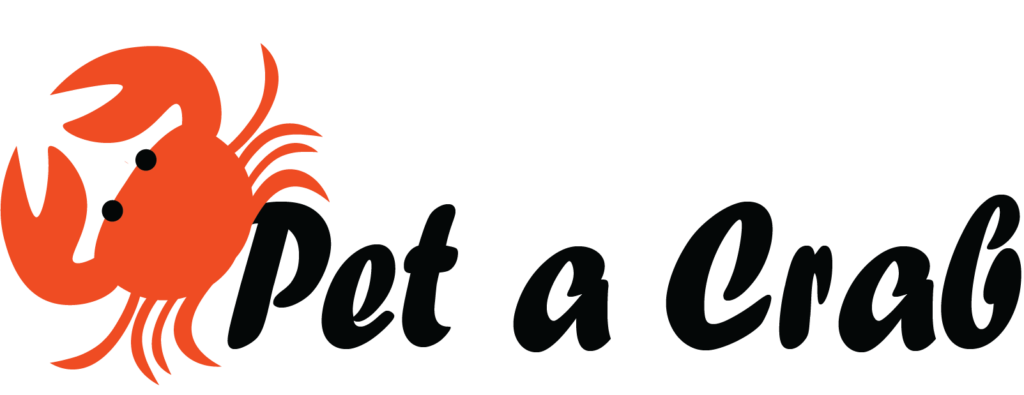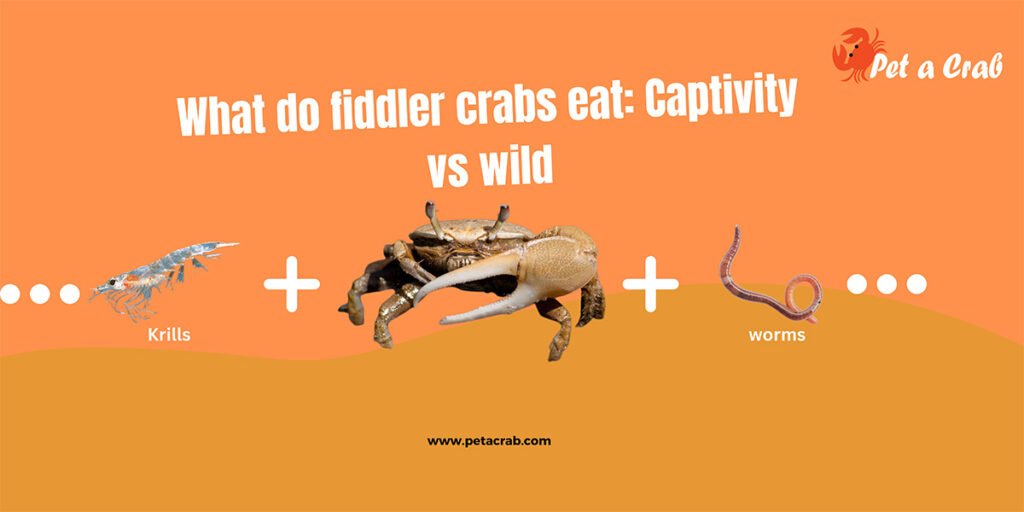Have you ever wondered what makes the Purple Shore Crab pet (Hemigrapsus nudus) fascinating? Unlike other crustaceans, this intertidal species can thrive in marine and brackish water, making it a unique option for home aquariums and paludariums.

But how do you create the perfect habitat for purple shore crabs? What do they feed on? Do they get along with other animals? Don’t worry! From experience gained in marine biology, aquarium science, and seasoned aquarists, I will provide the correct purple shore crab care sheet in this guide to ensure your pet thrives in captivity.
Quick Overview of Purple Shore Crab
- Common Name: Purple Shore Crab
- Purple Shore Crab Scientific Name: Hemigrapsus nudus
- Care Level: Moderate
- Temperature: 55-75°F (13-24°C)
- Temperament: Semi-territorial
- Color: Purple, brownish-purple, or greenish hue
- Size: 1.3-2.2 inches
- Diet: Omnivore
- Aquarium Type: Brackish or saltwater with access to land
- Activity Level: Active during the day
- Lifespan: 2-3 years in captivity
Interesting Purple Shore Crab Facts
Purple Shore Crab Habitat
Do you know that, “Where are purple shore crabs native to?” Purple shore crab is a native of the Pacific coast, from Alaska to California. They inhabit intertidal habitats, scurrying over rocky shores, estuaries, and tide pools, hiding under rocks and seaweed.
Purple Shore Crab Size and Appearance
Purple Shore Crabs are readily identified by the dark purple shell color, which is brown or greenish in tint. They may reach 1.3 to 2.2 inches in width. Their carapace is spineless, and they have small pincers compared to their body.
Purple Shore Crab Adaptations and Behavior
Purple shore crabs are adaptable, burrowing for protection and thriving in land and water. As they mature, they molt, becoming expert climbers. They’re not highly aggressive but may show a territorial behavior.
Purple Shore Crab Predators
According to Wikipedia, purple shore crabs are preyed upon by various predators, including seagulls, seabirds, white-winged scoters, larger crabs, staghorn sculpins, tidepool sculpins, anthopleura anemones, and parasitic flatworms such as Portunion conformis. Additionally, their eggs are vulnerable to parasitization by Carcinonemertes epialti.
Tank Setup: How to Create the Perfect Habitat For Purple Shore Crab Pet
To achieve the well-being of your pet purple shore crab, the creation of the ideal habitat is crucial. Here’s an ultimate guide to help you have a comfortable and healthy environment for your crustacean friend.
Tank Size & Type
For one or a few purple shore crab pets, a 10-15 gallon tank is recommended. This gives them plenty of space to scuttle about and express themselves. Employ a glass or acrylic tank with clear sides for viewing. But it is important to select a tank with a secure lid since these crabs are notorious escape artists, and a good lid will keep them from escaping when they shouldn’t.
Read More: Hermit Crab/Snail Shell Info on The Relationship
Water Requirements
The purple shore crab pet does well in brackish or saltwater since this best mimics their natural intertidal environment. The following water conditions are required for their well-being:
- Salinity: Use a specific gravity of 1.015-1.025 to keep the water salinity in proper condition.
- Temperature: The ideal temperature range is 55-75°F (13-24°C) to mimic their coastal environment.
- Filtration: Employ a low-flow filter or a sponge filter to provide clean water with no powerful currents, which could be stressful for your crabs.
- pH Level: Keep the pH level between 7.5-8.5 for the optimum conditions with a stable, mildly alkaline condition.
Land & Substrate
Do purple shore crab pets need a land and water area? Since they are semi-aquatic, these crabs need land and water areas in their tank. Here’s how to arrange them:
- Substrate: Fine sand or crushed coral is perfect, and both are wonderful for burrowing. The crabs adore digging, and these substrates mimic their natural environment so that they can dig secure burrows.
- Land Section: To create dry patches, add smooth rocks, driftwood, or artificial platforms. These provide the crabs with solid ground to walk on and rest on when they need to leave the water.
- Hiding Places: Having some hiding places in the tank is essential, as purple shore crabs like to search for some hiding places and make themselves feel secure. Caves, litter of leaves, or shells are the best places where they can hide and feel secure.
Related Topic: What Type of Wood is Ok for Hermit Crabs?
Humidity
Keeping the land section moderately humid is crucial to your purple shore crab’s health. A humidity level of about 70-80% is ideal, and a small humidifier or occasional misting will maintain this level.
Tank Mates: Can Purple Shore Crab Pet Be Kept with Other Crabs or Fish?
Purple shore crabs can be semi-aggressive, so choosing the right tankmates is important.
- Best Tankmates: Small, peaceful fish such as mollies or gobies, or other tankmates of similar size.
- What to Avoid: Large predatory fish, aggressive crabs, or solely water dwellers that might stress them. For example, while the electric blue crayfish is a fascinating freshwater species, it is not an ideal tankmate due to its territorial nature and potential to harm smaller crabs or fish.
- Keeping Multiple Crabs: If more than one are to be kept, provide sufficient space and refuges to avoid fighting.
Purple Shore Crab Diet and Feeding
What do purple shore crab pets eat? Usually, they will eat a variety of foods, and here’s what to include in their diet for proper nutrition:
- Algae/Biofilm: Natural or dried seaweed is essential.
- Small Invertebrates: Supplement with shrimp, brine shrimp, or plankton for protein.
- Vegetables: Feed them with blanched zucchini, carrots, or spinach.
- Protein: Feed pieces of fish, crab pellets, or bloodworms.
- Calcium: Crushed eggshells or cuttlebone to assist molting.
Lifespan
How Long Do They Live in Captivity?
Purple Shore Crabs can live for 3 to 5 years in aquariums. Their lifespan may vary based on tank conditions, diet, and environmental stress. They live longer if well taken care of.
Is Purple Shore Crab Poisonous?
Purple Shore Crabs are not dangerous and are non-venomous. They are safe to touch but possess sharp claws that will deliver painful pinches if threatened. The crabs were found to scavenge primarily on algae, small invertebrates, and detritus without producing harmful substances.
Related Topic: How To Identify Poisonous Crabs
Frequently Asked Questions
Are purple shore crabs legal to keep as pets in certain regions?
The legality of having purple shore crabs as pets differs by location. They are illegal in certain locations because of conservation or invasive species regulations. Consult local wildlife laws before obtaining one.
Do you have a purple shore crab as a pet?
Yes, I have a pet purple shore crab, and it is a fascinating species to observe. I’ve built a well-established brackish water tank with hiding spots and a proper diet to maintain it healthy and long-lived.
Are they easy to breed in captivity?
Purple shore crabs are extremely hard to breed in aquariums. They require special water conditions, salinity, and a controlled setup. They are extremely hard for most hobbyists to breed due to their complex larval developmental stages.
Are purple chore crabs good pets?
Yes. They can become excellent pets for experienced aquarists. They are not very demanding, yet they need a well-established tank, a suitable diet, and peaceful tankmates to live. With their active and curious nature, they are excellent specimens to observe.
Are purple shore crab edible?
While technically edible, Purple Shore Crabs are not commonly consumed due to their size and limited amount of meat. They are rather appreciated as a display aquarium pet than as a source of food.
References:
- TY – JOUR
AU – Hulbert, W.
AU – Schneider, D.
AU – Moon, Thomas
PY – 1976/06/01
SP – 217
EP – 222
T1 – Temperature and salinity adaptation in the purple shore crab Hemigrapsus nudus: An in vitro physiological study with excised gills
VL – 36
DO – 10.1007/BF00389282
JO – Marine Biology
ER –
- TY – JOUR
AU – McGaw, Iain
PY – 2003/03/01
SP – 38
EP – 49
T1 – Behavioral Thermoregulation in Hemigrapsus nudus, the Amphibious Purple Shore Crab
VL – 204
DO – 10.2307/1543494
JO – The Biological bulletin
ER –
- https://en.wikipedia.org/wiki/Purple_shore_crab
- https://link.springer.com/article/10.1007/BF00389282
- McGaw IJ. Behavioral thermoregulation in Hemigrapsus nudus, the amphibious purple shore crab. Biol Bull. 2003 Feb;204(1):38-49. doi: 10.2307/1543494. PMID: 12588743.


